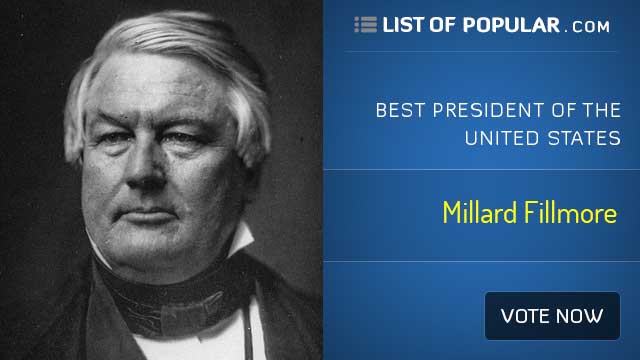The Best US President - Millard Fillmore
Early Life and Political Beginnings
Millard Fillmore, the thirteenth President of the United States, was born on January 7, 1800, in Locke, New York. Coming from humble beginnings, Fillmore worked as a cloth carder and later as a schoolteacher to support his education. He studied law and eventually entered the legal profession, establishing a successful practice in East Aurora, New York. Fillmore's involvement in local politics laid the groundwork for his later political career.
Entry into National Politics
Fillmore's political ascent began with his election to the New York State Assembly in 1828. Over the years, he gained a reputation for his thorough understanding of public policy and his commitment to education. Fillmore's political career continued to flourish, leading to his election as a U.S. Representative in 1832 and later as the Comptroller of New York in 1847.
Vice Presidency and the Death of Zachary Taylor
Millard Fillmore's political trajectory took an unexpected turn when he became the Vice President of the United States under President Zachary Taylor in 1848. Taylor's sudden death in 1850 elevated Fillmore to the presidency, making him the second vice president to assume the office due to the death of his predecessor.
Compromise of 1850 and Fugitive Slave Act
Upon assuming the presidency, Fillmore faced the pressing issue of sectional tensions over slavery. In an attempt to quell these tensions and preserve the Union, Fillmore supported the Compromise of 1850, a package of legislation that aimed to address the issue of slavery in the newly acquired territories. One of the most controversial elements of the compromise was the Fugitive Slave Act, which required the return of escaped slaves to their owners, further intensifying the debate over the institution of slavery.
Foreign Policy and the Opening of Japan
Fillmore's administration also had notable achievements in foreign policy. In 1852, Commodore Matthew Perry, under Fillmore's orders, led an expedition to Japan with the aim of opening diplomatic and commercial relations with the isolated nation. The Treaty of Kanagawa, signed in 1854, marked a significant milestone in opening Japan to the world and expanding American influence in the Pacific.
Failed Reelection and Later Years
Millard Fillmore's presidency faced criticism from various quarters, particularly from those who opposed the Fugitive Slave Act. In the 1852 presidential election, Fillmore ran as the candidate of the Know-Nothing Party, an anti-immigrant and nativist political movement. However, he failed to secure reelection, and Franklin Pierce became the 14th President of the United States. Following his departure from the presidency, Fillmore retired from active politics and spent his later years in Buffalo, New York.
Legacy and Historical Assessment
Millard Fillmore's presidency is often overshadowed by the turbulent events of his time, particularly the divisive debates over slavery. His support for the Compromise of 1850, including the controversial Fugitive Slave Act, reflects the difficult decisions faced by leaders attempting to maintain the fragile balance between North and South. While his foreign policy achievements, such as the opening of Japan, receive recognition, Fillmore's legacy remains complex and subject to historical scrutiny.
Conclusion
Millard Fillmore's presidency marked a pivotal moment in American history, grappling with the deep-seated tensions that would ultimately lead to the Civil War. His efforts to navigate the complex issues of the time showcased the challenges faced by leaders seeking to preserve the Union in the face of mounting sectional discord. Fillmore's legacy invites examination and reflection on the complexities of leadership during a critical period in the nation's history.
Millard Fillmore's role in the Compromise of 1850 and the controversial Fugitive Slave Act underscores the difficulties faced by leaders attempting to maintain unity in a nation deeply divided over the issue of slavery. His presidency remains a significant chapter in the unfolding narrative of 19th-century America.

